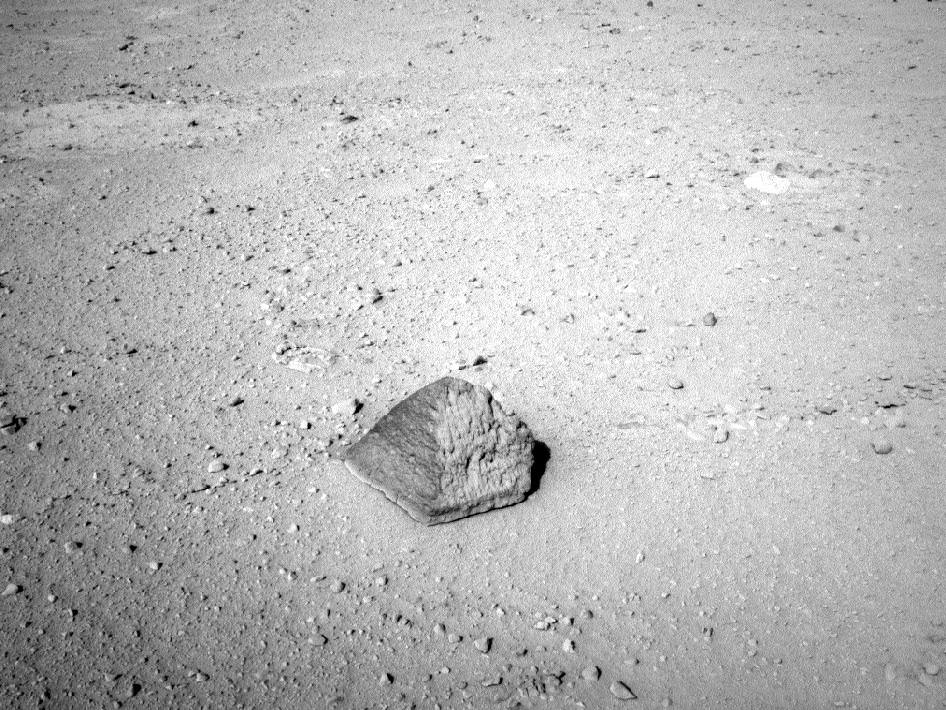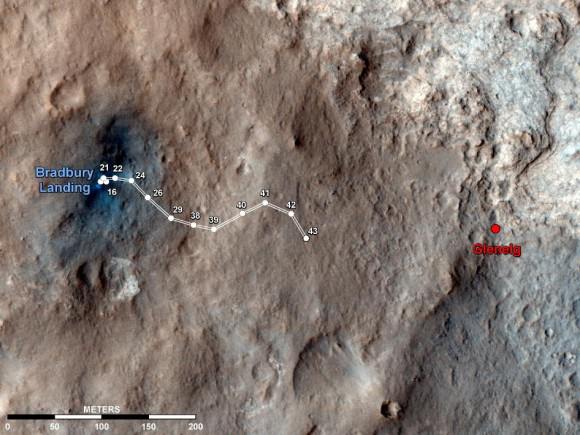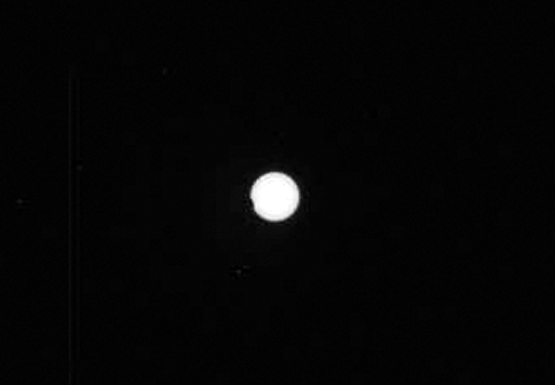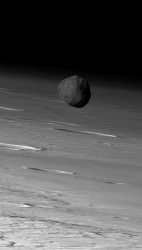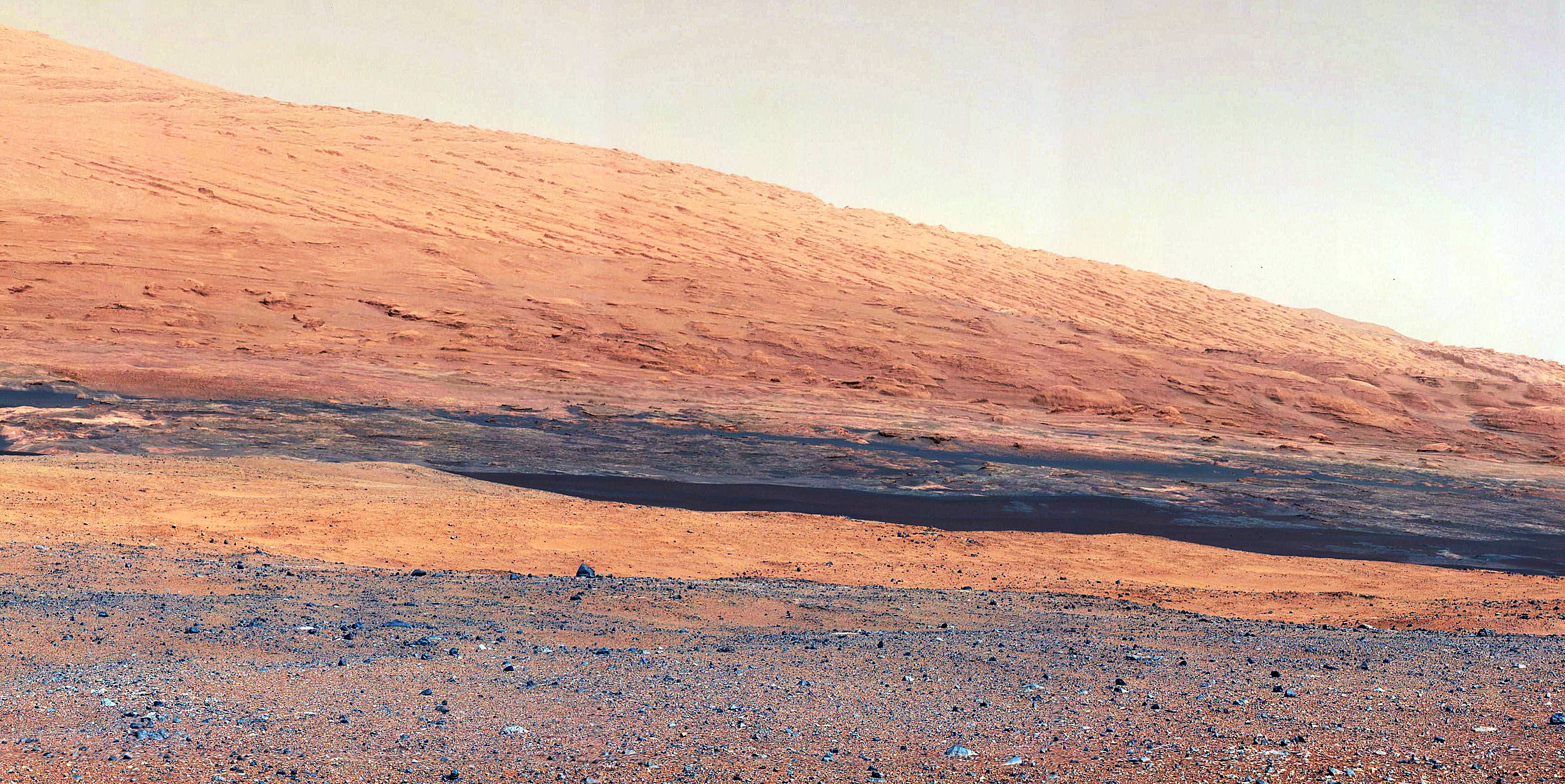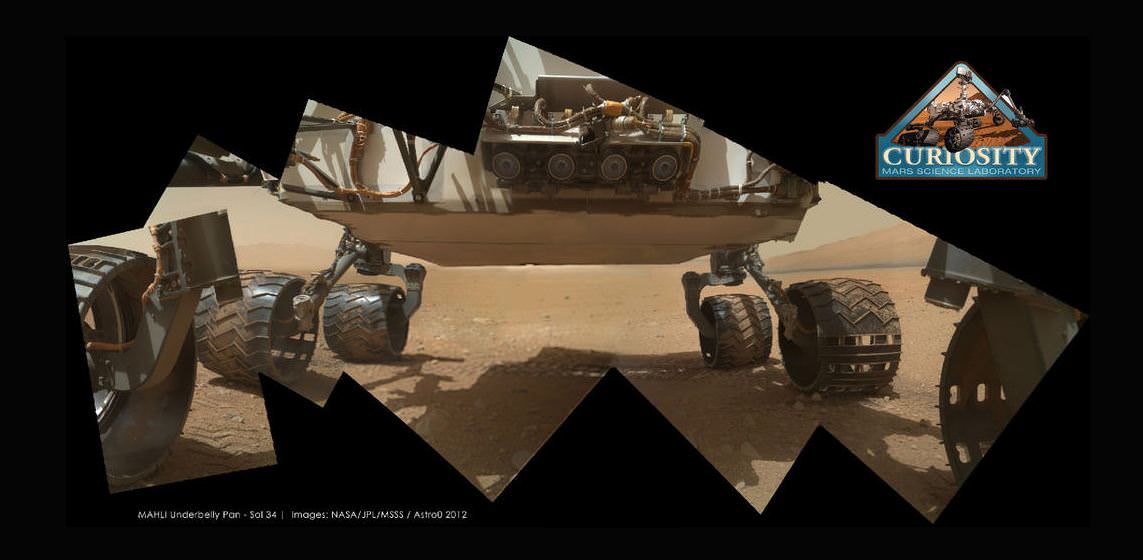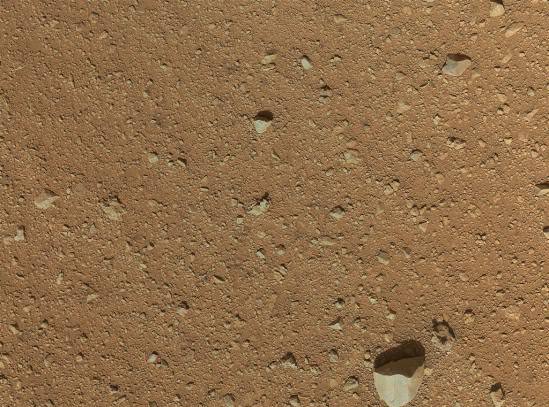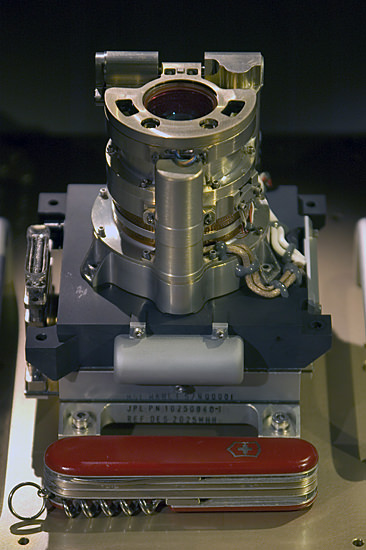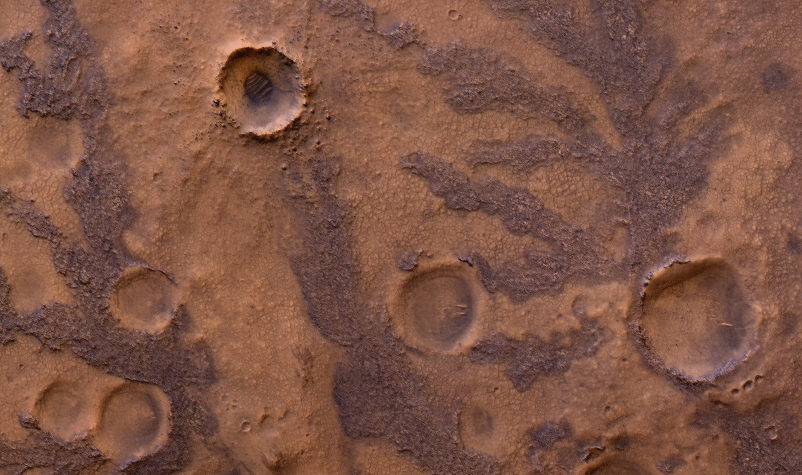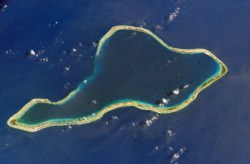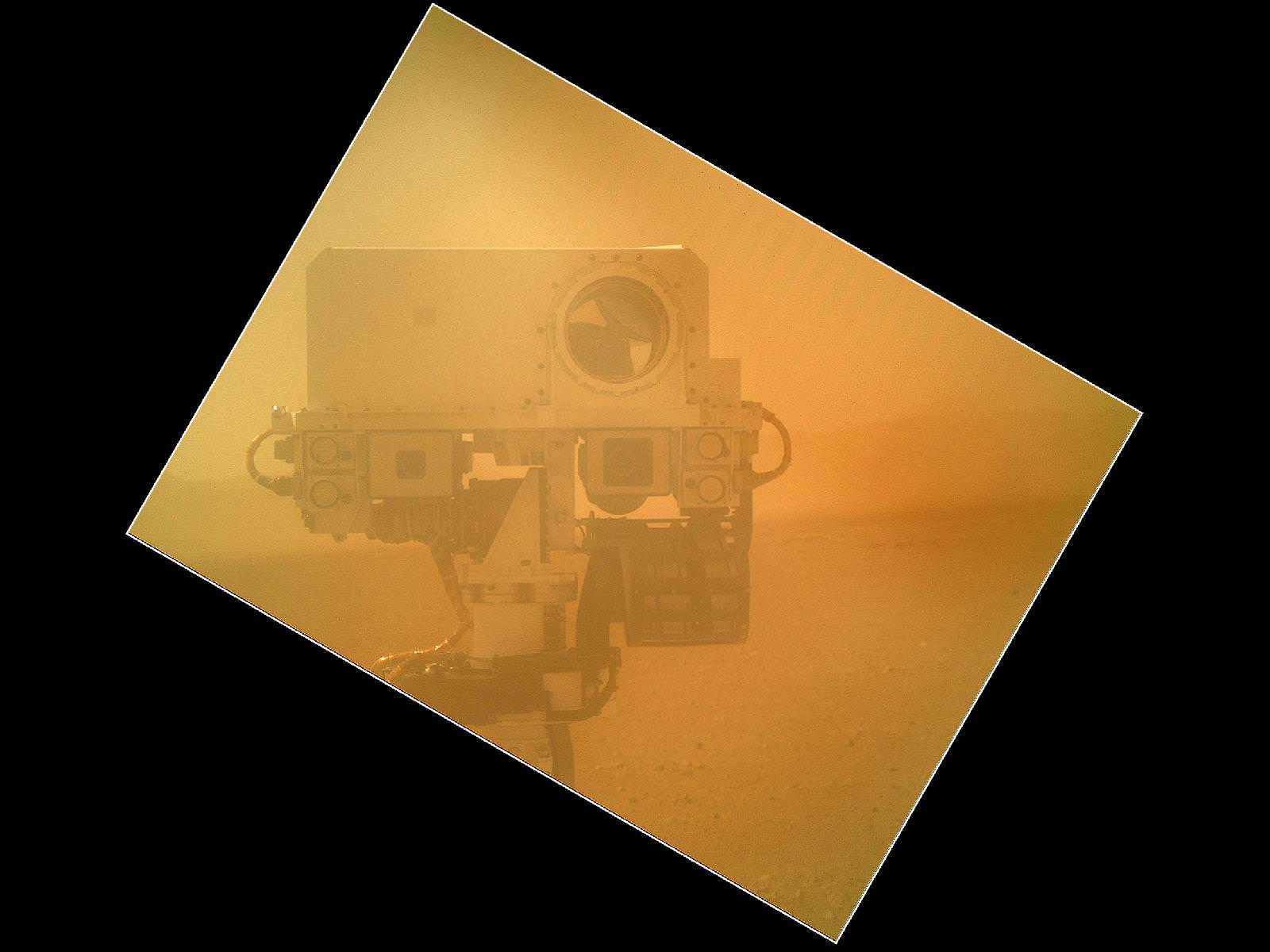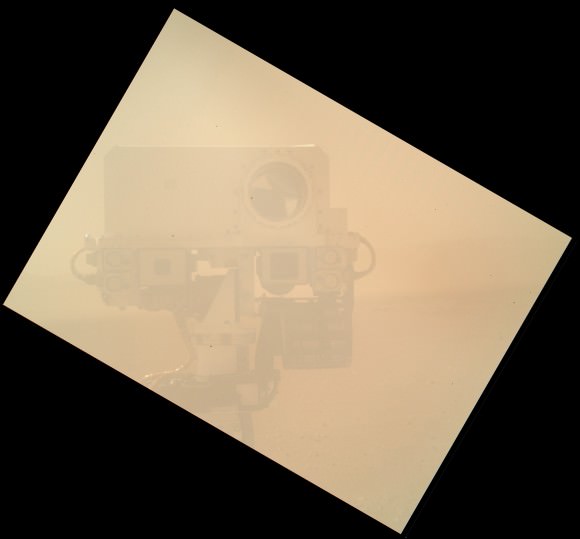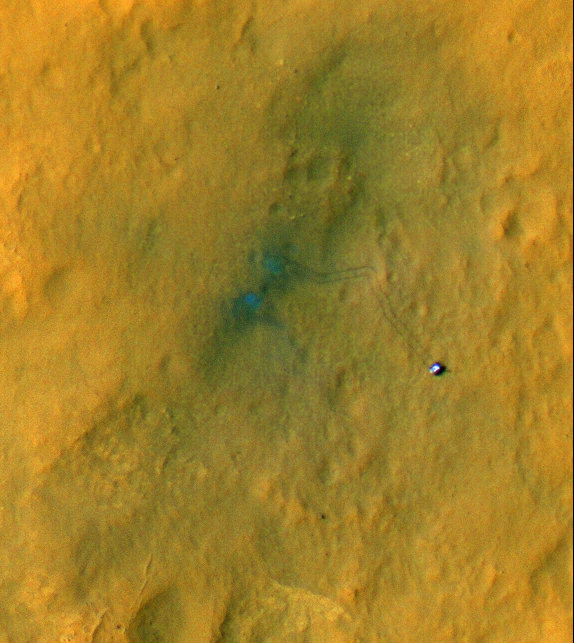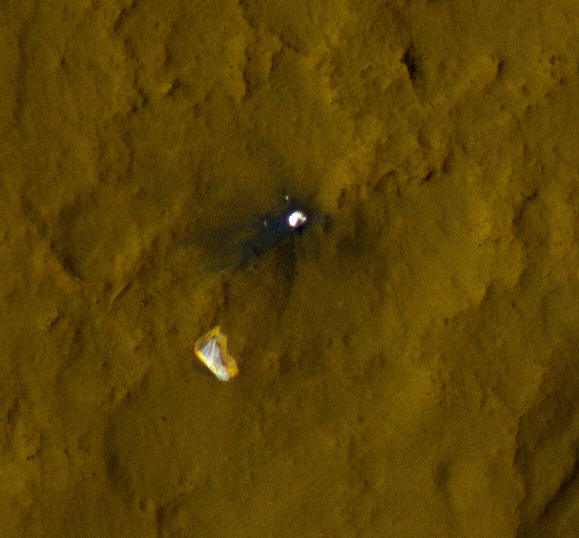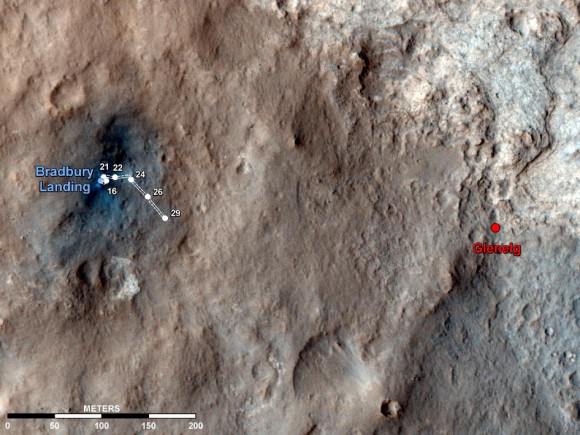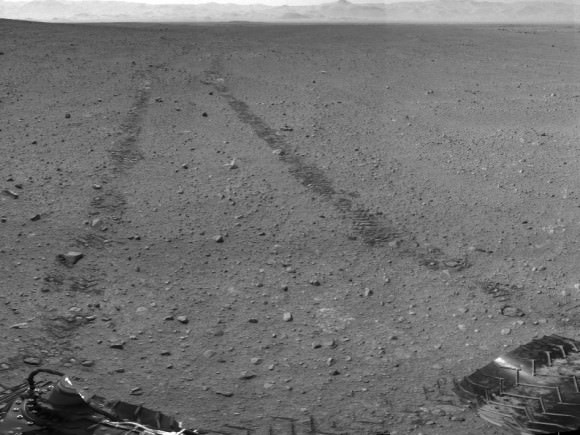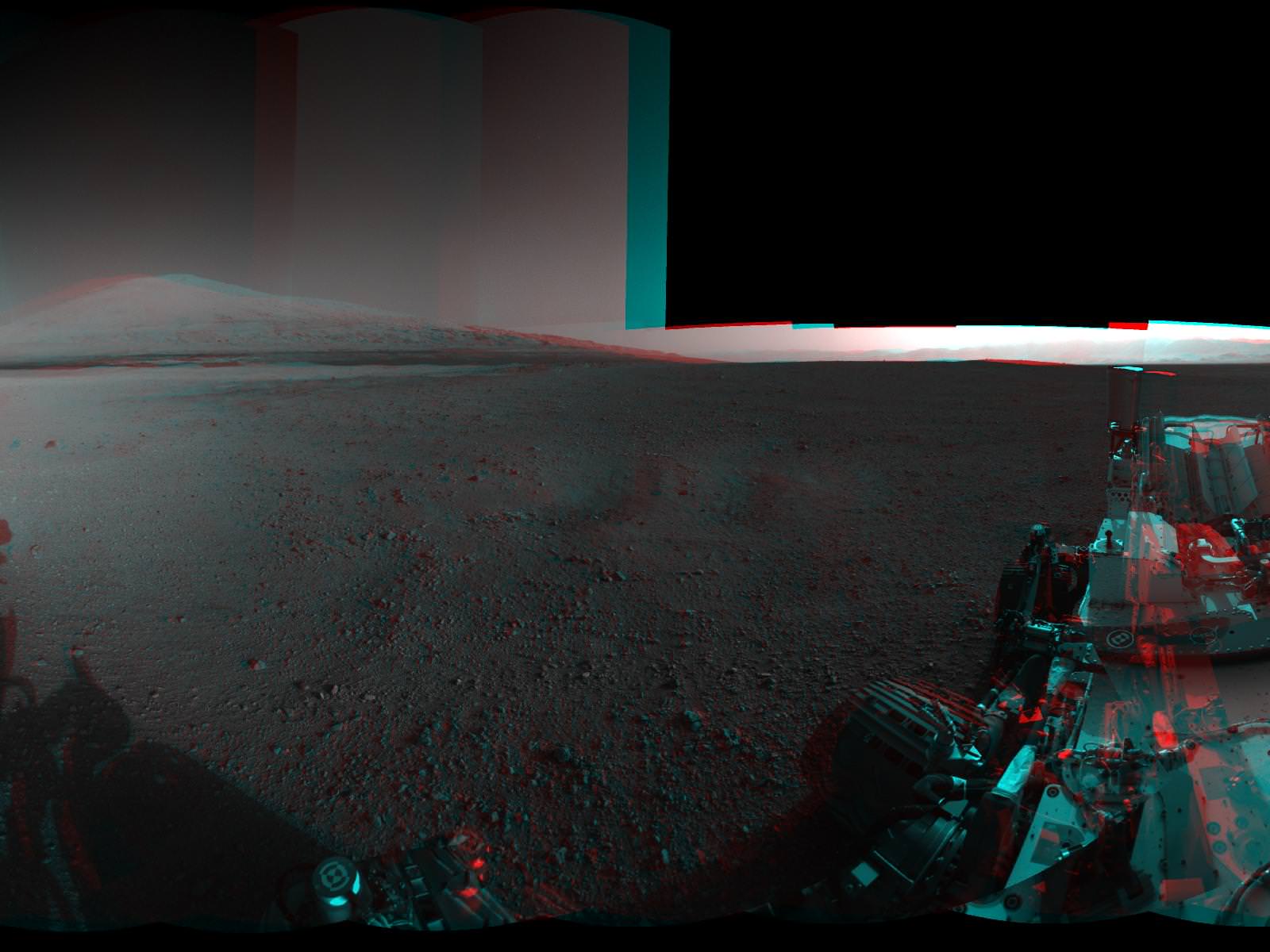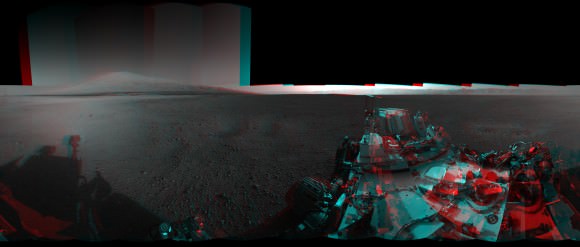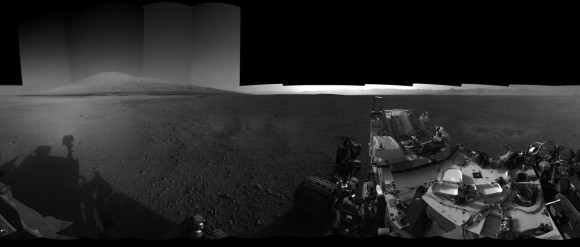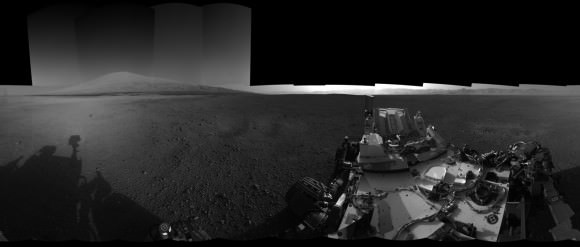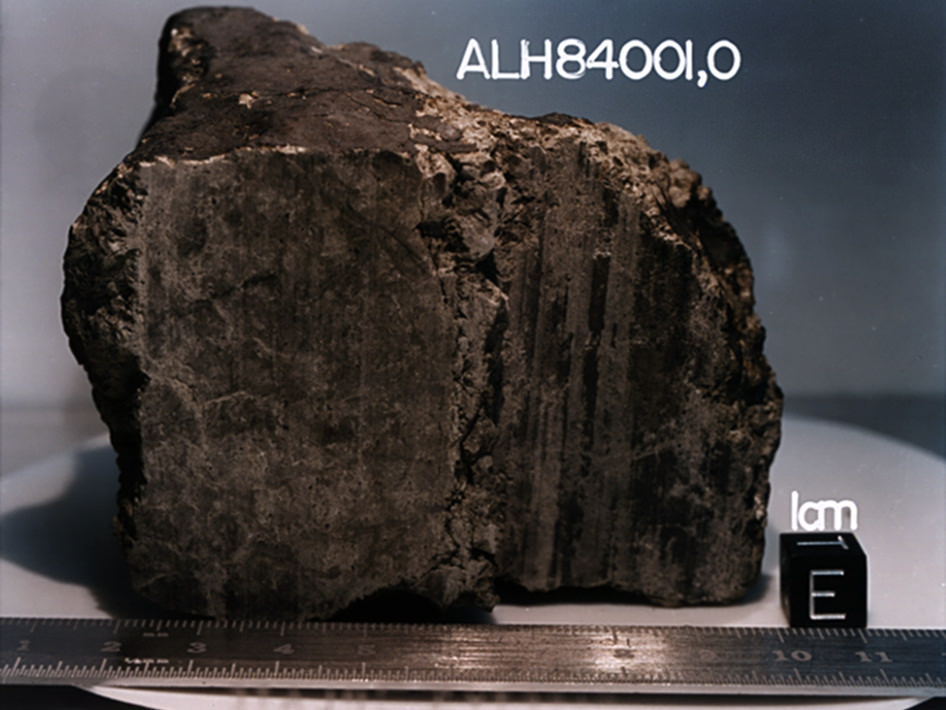The rock chosen for the first contact science investigations for the Curiosity rover. Credit: NASA/JPL-Caltech
The Mars Science Laboratory team has identified their target for the first full-up contact science investigations using all the instruments attached to the Curiosity rover’s robotic arm. And ‘target’ is the operative word here, as this rock will be shot with Curiosity’s laser to help determine it chemical makeup. Interestingly, it has an unusual pyramid shape, and it was described as a “cool-looking rock sitting out on the plains of Mars,” by MSL project scientist John Grotzinger. But the rock now has a name, and while we don’t know everything about it yet, like its namesake, this rock likely has a very interesting back story.
The rock has been dubbed “Jake Matijevic,” named for the surface operations systems engineer for all the Mars rover missions so far. But unfortunately, Matijevic passed away at age 64 just days after Curiosity touched down on Mars last month. Matijevic was one of the original technology developers for rovers on Mars — figuring out how to link the mechanics, avionics and all the systems together. He led the surface operations for the Sojourner rover in 1996, worked for years with the Spirit and Opportunity rovers, and was instrumental in getting the Curiosity rover ready for its mission.
Matijevic originally was a mathematician and he developed the Matijevic Theorem, which MSL’s John Cook described as “an obscure mathematical theorem” but others have said it was “one of the most beautiful results of recent years in commutative algebra.”
“To honor Jake and his contributions we’ve named the first rock where we’re going to do contact science after him,” said Grotzinger.
The rock named Jake is about 25 centimeters (10 inches) tall and 40 cm (16 in) wide at the base, so it’s not a very large rock, nor is it very eccentric. It likely is a shapely lump of basic basalt ejecta. It is uniform in color and is actually similar in size, shape and composition to the first rock studied by the Spirit rover over eight years ago. But being a rather ordinary rock is a good thing, said Grotzinger.
“The science team has had interest for some time to find a rock that is relatively uniform in composition to do comparisons,” between the ChemCam (the laser-zapper tool) and the Alpha Particle X-ray Spectrometer (APXS), Grotziner said, to calibrate both instruments, especially the ChemCam, which is a new version of an instrument that is on the MER rovers.
“Here we get to really test a comparison between something that is tried and true with the latest and greatest technology,” he said.
Grotziner noted that most of the terrain they are seeing so far in Gale Crater has a rather uniform surface soil with some bedrock peeking out occasionally. But darker rocks like Jake, just sitting on the surface, are not quite so common. So how did Jake get there?
“Our general consensus is that it might be a piece of secondary of impact ejecta, maybe from an impact somewhere else, maybe outside of Gale Crater,” Grotziner said, “where a rock was thrown into Gale Crater and it has just sat there for a long time. It appears to have weathered more slowly than the stuff that’s around it, so that means it’s probably a harder rock.”
So a rock blasted from a huge impact on another location on Mars ends up sitting in Gale Crater where the Curiosity rover is going to zap it with a laser.
Oh, the stories this rock will be able to tell. And hopefully the instruments on Curiosity will allow the rock to divulge its secrets.
This map shows the route driven by NASA’s Mars rover Curiosity through the 43rd Martian day, or sol, of the rover’s mission on Mars (Sept. 19, 2012). Credit: NASA/JPL-Caltech/Univ. of Arizona

